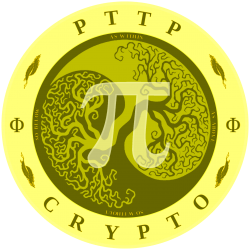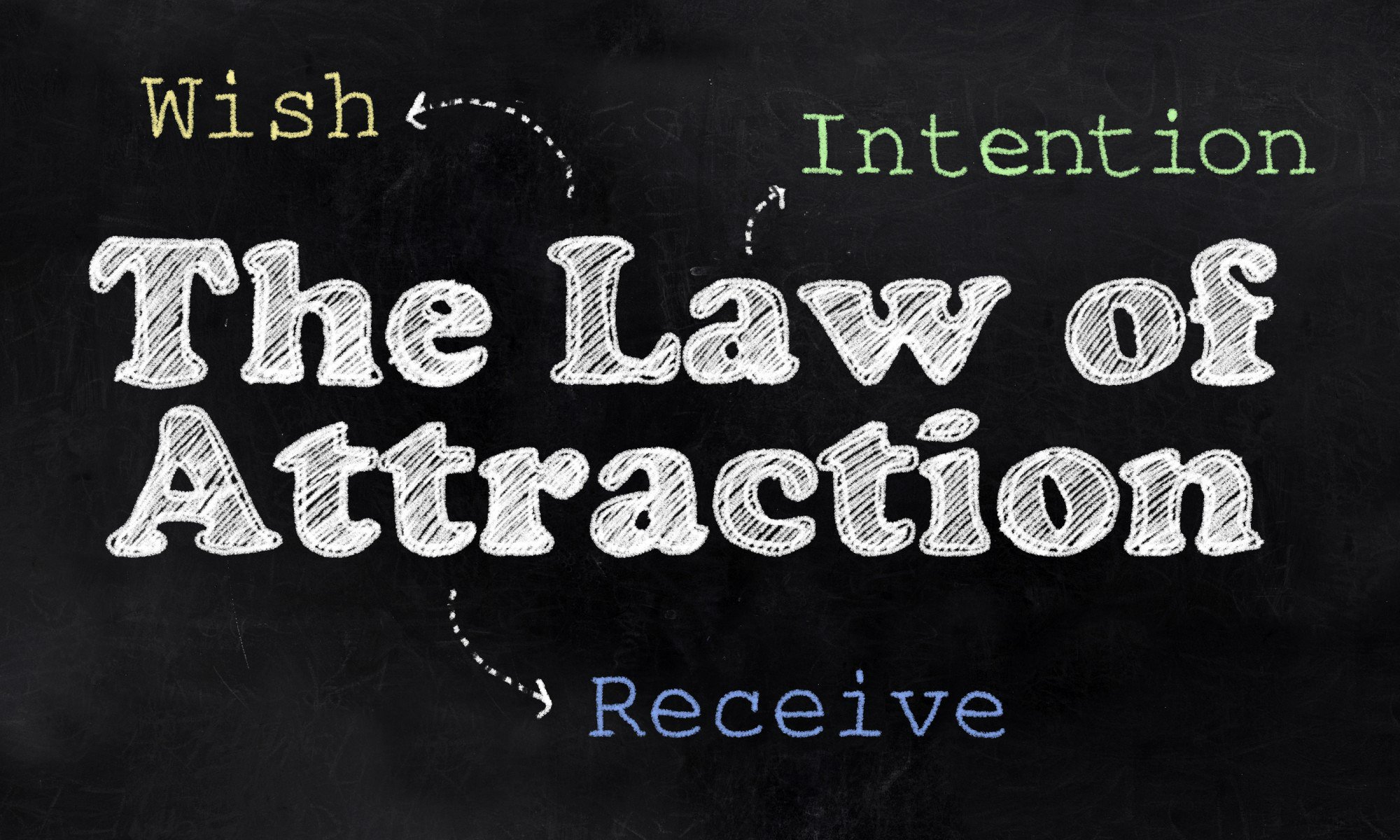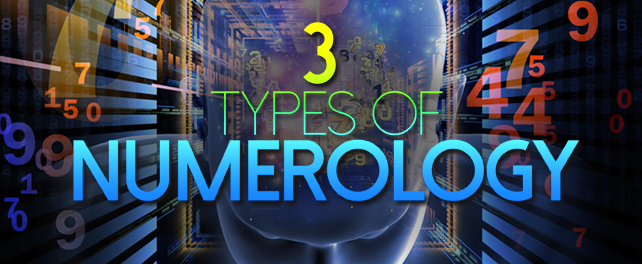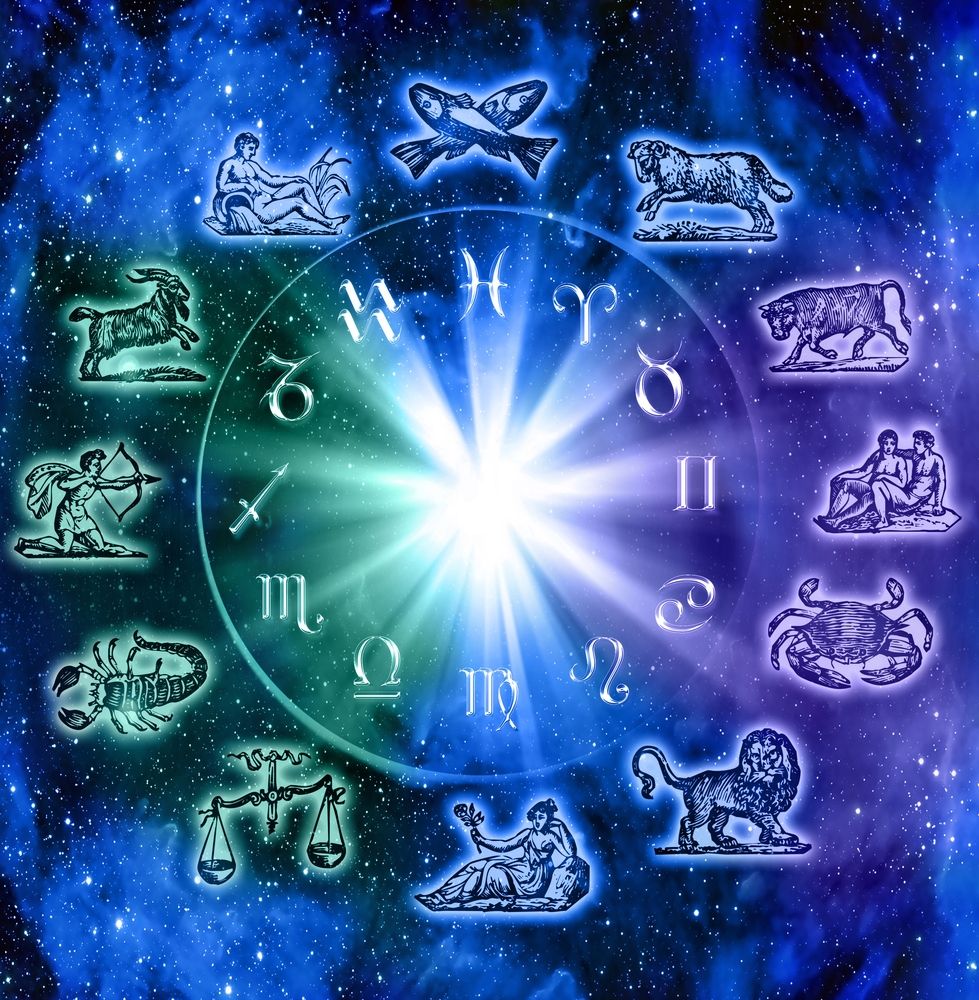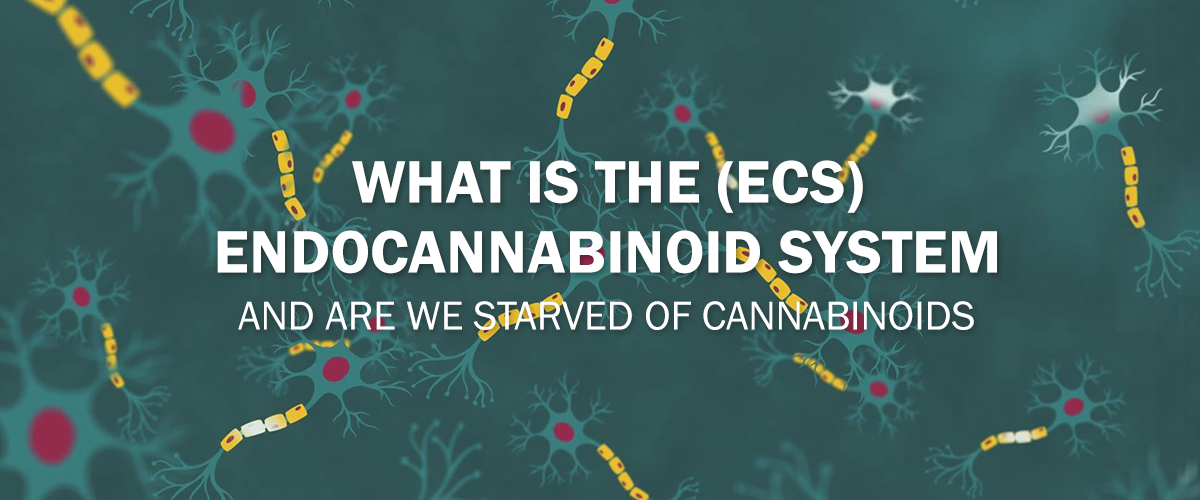Sounds & Words
Sound Frequency & Vibration like mantra’s are Spells and Languages are based on spells & creation…
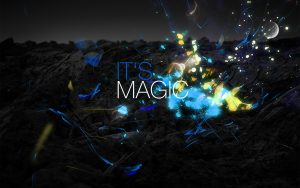
Sound & Words
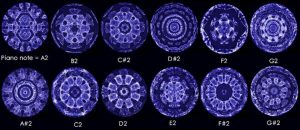
Words has Frequency and its Sound

Chakra System with Sacred Frequency Patterns
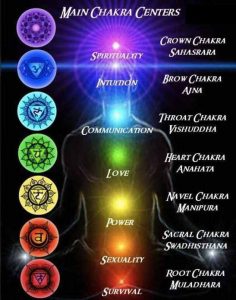
look at all those patterns
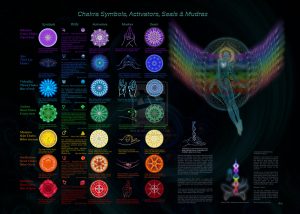
you can find these patterns everywhere..
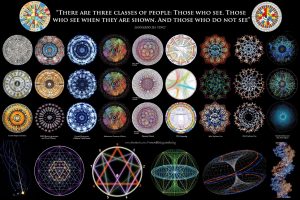
Water molecules interact also with sound and your body is made of 70 percent of water…

Numerology
1. Septenary Numerology
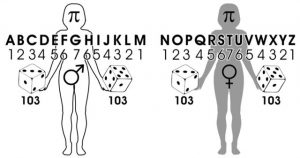
2. Chaldean Numerology
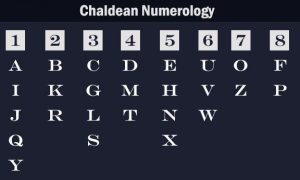
3. Pythagorean Numerology
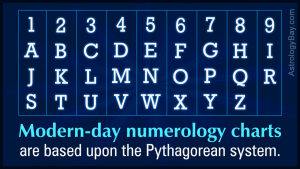
Numerology is any belief in the divine or mystical relationship between a number and one or more coinciding events.[2] It is also the study of the numerical value of the letters in words, names and ideas. It is often associated with the paranormal, alongside astrology and similar divinatory arts.[3]
Despite the long history of numerological ideas, the word “numerology” is not recorded in English before c.1907.[4]
The term numerologist can be used for those who place faith in numerical patterns and draw pseudo-scientific inferences from them, even if those people do not practice traditional numerology. For example, in his 1997 book Numerology: Or What Pythagoras Wrought, mathematician Underwood Dudley uses the term to discuss practitioners of the Elliott wave principle of stock market analysis.
History
Pythagoras and other philosophers of the time believed that because mathematical concepts were more “practical” (easier to regulate and classify) than physical ones, they had greater actuality. St. Augustine of Hippo (A.D. 354–430), wrote “Numbers are the Universal language offered by the deity to humans as confirmation of the truth.”[dubious ] Similar to Pythagoras, he too believed that everything had numerical relationships and it was up to the mind to seek and investigate the secrets of these relationships or have them revealed by divine grace. See Numerology and the Church Fathers for early Christian beliefs on the subject.
In 325 AD, following the First Council of Nicaea, departures from the beliefs of the state church were classified as civil violations within the Roman Empire. Numerology had not found favor with the Christian authority of the day and was assigned to the field of unapproved beliefs along with astrology and other forms of divination and “magic”.[citation needed] Despite this religious purging, the spiritual significance assigned to the heretofore “sacred” numbers had not disappeared; several numbers, such as the “Jesus number” have been commented and analyzed by Dorotheus of Gaza and numerology still is used at least in conservative Greek Orthodox circles.[5][6] However, despite the church’s resistance to numerology, there have been arguments made for the presence of numerology in the Bible and religious architecture. For example, the numbers 3 and 7 hold strong spiritual meaning in the Bible. The most obvious example would be the creation of the world in 7 days. Jesus asked God 3 times if he could avoid crucifixion and was crucified at 3 in the afternoon. 7 is the length of famine and other God-imposed events and is sometimes followed by the number 8 as a symbol of change.[7]
Some alchemical theories were closely related to numerology. For example, Persian-Arab alchemist Jabir ibn Hayyan framed his experiments in an elaborate numerology based on the names of substances in the Arabic language.[8]
Numerology is prominent in Sir Thomas Browne‘s 1658 literary Discourse The Garden of Cyrus. Throughout its pages the author attempts to demonstrate that the number five and the related Quincunx pattern can be found throughout the arts, in design, and in nature – particularly botany.
Modern numerology has various antecedents. Ruth A. Drayer’s book, Numerology, The Power in Numbers (Square One Publishers) says that around the start of the 20th century Mrs. L. Dow Balliett combined Pythagoras’ work with Biblical reference. Balliett’s student, Juno Jordan, helped numerology become the system known today as Pythagorean, although Pythagoras himself had nothing to do with the system, by publishing “The Romance in Your Name” in 1965, provided a system for identifying what he called key numerological influences in names and birth dates that remains used today. Other ‘numerologists’ including Florence Campbell (1931),[9] Lynn Buess (1978), Mark Gruner (1979), Faith Javane and Dusty Bunker (1979), Kathleen Roquemore (1985) expanded on the use of numerology for assessing personality or events. These different schools of numerology give various methods for using numerology.
Lack of evidence
Skeptics argue that numbers have no occult significance and cannot by themselves influence a person’s life. Skeptics therefore regard numerology as a superstition and a pseudoscience that uses numbers to give the subject a veneer of scientific authority.[2]
Two studies have been done investigating numerological claims, both producing negative results, one in the UK in 1993,[10] and one in 2012 in Israel. The experiment in Israel involved a professional numerologist and 200 participants. The experiment was repeated twice and still produced negative results.[11]
Methods
Alphabetic systems
There are various numerology systems which assign numerical value to the letters of an alphabet. Examples include the Abjad numerals in Arabic, the Hebrew numerals, Armenian numerals, and Greek numerals. The practice within Jewish tradition of assigning mystical meaning to words based on their numerical values, and on connections between words of equal value, is known as gematria.
Latin alphabet systems
In one method, numbers can be assigned to letters of the Latin alphabet as follows:
- 1 = a, j, s,
- 2 = b, k, t,
- 3 = c, l, u,
- 4 = d, m, v,
- 5 = e, n, w,
- 6 = f, o, x,
- 7 = g, p, y,
- 8 = h, q, z,
- 9 = i, r,
…..and then summed. Examples:
- 3,489 → 3 + 4 + 8 + 9 = 24 → 2 + 4 = 6
- Hello → 8 + 5 + 3 + 3 + 6 = 25 → 2 + 5 = 7
A quicker way to arrive at a single-digit summation (the digital root) is simply to take the value modulo 9, substituting a 0 result with 9 itself.
The single digit then arrived at is assigned a particular significance according to the method used.
Different methods of interpretation exist, including Chaldean, Pythagorean, Hebraic, Helyn Hitchcock‘s method, Phonetic, Japanese, Arabic and Indian.
The examples above are calculated using decimal (base 10) arithmetic. Other number systems exist, such as binary, octal, hexadecimal and vigesimal; summing digits in these bases yields different results. The first example, shown above, appears thus when rendered in octal (base 8):
- 3,48910 = 66418 → 6 + 6 + 4 + 1 = 218 → 2 + 1 = 38 = 310
Abjad system
The Arabic system of numerology is known as Abjad notation or Abjad numerals. In this system each letter of Arabic alphabet has a numerical value. This system is the foundation of ilm-ul-cipher, the Science of Cipher, and ilm-ul-huroof, the Science of Alphabet:
ط=9 ح=8 ز=7 و=6 ه=5 د=4 ج=3 ب=2 أ=1
ص=90 ف=80 ع=70 س=60 ن=50 م=40 ل=30 ك=20 ي=10
ظ=900 ض=800 ذ=700 خ=600 ث=500 ت=400 ش=300 ر=200 ق=100
غ=1000
Chinese numerology
Some Chinese assign a different set of meanings to the numbers and certain number combinations are considered luckier than others. In general, even numbers are considered lucky, since it is believed that good luck comes in pairs.
Traditional Chinese Medicine (TCM), and its associated fields such as acupuncture, base their system on mystical numerical associations, such as the “12 vessels circulating blood and air corresponding to the 12 rivers flowing toward the Central Kingdom; and 365 parts of the body, one for each day of the year” being the basis of locating acupuncture points.[12]
Chinese number definitions
Cantonese frequently associate numbers with the following connotations (based on its sound), which may differ in other varieties of Chinese:
- 一 [jɐ́t] – sure
- 二 [ji̭ː] – easy 易 [ji̭ː]
- 三 [sáːm] – live 生 [sáːŋ] but it can also be seen as a halved eight when using Arabic numerals (3) (8) and so considered unlucky.
- 四 [sēi] – considered unlucky since 4 is a homophone with the word for death or suffering 死 [sěi], yet in the Shanghainese, it is a homophone of water (水) and is considered lucky because water is associated with money.
- 五 [ŋ̬] – the self, me, myself 吾 [ŋ̭], nothing, never 唔 [ŋ, m][need tone] in the Shanghainese, it is a homophone of fish (鱼)
- 六 [lùːk] – easy and smooth, all the way
- 七 [tsʰɐ́t] – a slang/vulgar word in Cantonese.
- 八 [pāːt] – sudden fortune, prosperity 發 [fāːt]
- 九 [kɐ̌u] – long in time 久 [kɐ̌u], enough 夠 [kɐ̄u] or a slang/vulgar word derived from dog 狗 [kɐ̌u] in Cantonese
Some “lucky number” combinations include:
- 99 – doubly long in time, hence eternal; used in the name of a popular Chinese American supermarket chain, 99 Ranch Market.
- 168 – many premium-pay telephone numbers in China begin with this number, which is considered lucky. It is also the name of a motel chain in China (Motel 168).
- 888 – Three times the prosperity, means “wealthy wealthy wealthy”.
Indian numerology
In South India, mostly Tamil Nadu, the numbers assigned to English alphabets are different. The list is shown below:
- 1 = A, I, J, Q, Y
- 2 = B, K, R
- 3 = C, G, L, S
- 4 = D, M, T
- 5 = E, H, N, X
- 6 = U, V, W
- 7 = O, Z
- 8 = F, P
There is no assignment for the number 9. Numerologists analyze double-digit numbers from 10 to 99.
Other uses of the term
Subcarrier Spacing and Symbol Length in 5G/NR Wireless Communication Systems
Fifth generation (5G), a.k.a. New Radio (NR), uses the term “numerology” to describe the combination of subcarrier spacing and symbol length. For example, in NR(5G) several different numerology (i.e., different subcarrier spacing and symbol length) are supported whearas in LTE there is only one numerology.[13]
To describe questionable concepts based on possibly coincidental numerical patterns
Scientific theories are sometimes labeled “numerology” if their primary inspiration appears to be a set of patterns rather than scientific observations. This colloquial use of the term is quite common within the scientific community and it is mostly used to dismiss a theory as questionable science.
The best known example of “numerology” in science involves the coincidental resemblance of certain large numbers that intrigued such eminent men as mathematical physicist Paul Dirac, mathematician Hermann Weyl and astronomer Arthur Stanley Eddington. These numerical coincidences refer to such quantities as the ratio of the age of the universe to the atomic unit of time, the number of electrons in the universe, and the difference in strengths between gravity and the electric force for the electron and proton. (“Is the Universe Fine Tuned for Us?”, Stenger, V.J., page 3[14]).
The discovery of atomic triads, an early attempt to sort the elements into some logical order by their physical properties, was once considered a form of numerology, and yet ultimately led to the construction of the periodic table. Here the atomic weight of the lightest element and the heaviest are summed, and averaged, and the average is found to be very close to that of the intermediate weight element. This didn’t work with every triplet in the same group, but worked often enough to allow later workers to create generalizations.
Large number co-incidences continue to fascinate many mathematical physicists. For instance, James G. Gilson has constructed a “Quantum Theory of Gravity” based loosely on Dirac’s large number hypothesis.[15]
Wolfgang Pauli was also fascinated by the appearance of certain numbers, including 137, in physics.[16]
British mathematician I. J. Good wrote:
There have been a few examples of numerology that have led to theories that transformed society: see the mention of Kirchhoff and Balmer in Good (1962, p. 316) … and one can well include Kepler on account of his third law. It would be fair enough to say that numerology was the origin of the theories of electromagnetism, quantum mechanics, gravitation…. So I intend no disparagement when I describe a formula as numerological.
When a numerological formula is proposed, then we may ask whether it is correct. … I think an appropriate definition of correctness is that the formula has a good explanation, in a Platonic sense, that is, the explanation could be based on a good theory that is not yet known but ‘exists’ in the universe of possible reasonable ideas.
Zodiac Astrology
The Origin of the Zodiac: (Astrology)
The zodiac (Greek: ζoδιακός, zōdiakos) is the term used to describe the circle of twelve 30° divisions of celestial longitude that are centred upon the ecliptic – the path of the sun. The term zodiac derives from Latin zōdiacus, which in its turn comes from the Greek ζoδιακoς κύκλος (zōdiakos kuklos), meaning “circle of animals”.
From the earliest of times, the zodiac has been universally used to predict or reflect characteristics of personality, whether from the Chinese, Mesopotamian, Indus Valley, Egyptian or any other culture, echoing the ancient philosophy ‘As above – so below‘… what we today call astrology.
Astrology, in its broadest sense, is the search for purpose in the heavens.
We know from ancient records that the Greeks inherited their knowledge of the heavens primarily from the Mesopotamians, who in turn inherited their knowledge from the Sumerians. But is there any evidence of the heavenly constellations in art or culture from before this time. Remarkably, it has been proposed that the images at Lascaux and other nearby Palaeolithic sites show exactly that…
The Lascaux Planetarium.
Near to the entrance of the Lascaux cave complex is a magnificent painting of a bull. Hanging over its shoulder is what appears (to us) to be a map of the Pleiades, the cluster of stars sometimes called the Seven Sisters. Inside the bull painting, there are also indications of spots that may be a representation of other stars found in that region of sky. Today, this region forms part of the constellation of Taurus the bull.
In recent years, new research has suggested that the Lascaux paintings may incorporate prehistoric star charts. Dr Michael Rappenglueck of the University of Munich argued that some of the non-figurative dot clusters and dots within some of the figurative images correlate with the constellations of Taurus, The Pleiades and the grouping known as the “Summer Triangle”. Based on her own study of the astronomical significance of Bronze Age petroglyphs in the Vallée des Merveilles and her extensive survey of other prehistoric cave painting sites in the region — most of which appear to have been specifically selected because the interiors are illuminated by the setting sun on the day of the winter solstice — French researcher Chantal Jègues-Wolkiewiez has further proposed that the gallery of figurative images in the Great Hall represents an extensive star map and that key points on major figures in the group correspond to stars in the main constellations as they appeared in the Palaeolithic leading to the remarkable suggestion of a direct transfer of information for over 17,000 years.
| The Origin of the Zodiac: |
While there are currently 88 constellations officially by the IUA recognised today (9), this page is concerned only with the origin of the 12 constellations that make up the modern zodiac.
The classical map of the sky, with the 48 Greek constellations, was derived from at least two different pre-Greek traditions. One tradition comprised the 12 signs of the zodiac, with several associated animalconstellations, all of which developed over 3,200-500 BC in Mesopotamia in a religious or ritual tradition. These were taken over by the Greeks around 500 BC. However the other Babylonian constellations, their farming-calendar tradition, were not adopted. The other tradition was not Mesopotamian; it comprised large constellations which appear to date from 2,800 BC, probably from the Mediterranean region, devised for the navigators of ships. They include huge bears and serpents which marked the celestial pole and equator at that time, and probably the four anonymous giants which we know as Hercules, Ophiuchus, Bootes, and Auriga, as well as some of the large southern ‘marine’ constellations. The origins of some other constellations, including the Perseus tableau and various animals, are unknown. (11) It is therefore currently concluded that among the Indo-European peoples, astrology dates to the third millennium BC. (4) This is supported by the following research.
‘There has been much speculation as to the origin of the constellations. Until recently it has usually been assumed that they evolved from the fancies of primitive imaginations, but research now suggests that they were designed as a pictorial scientific coordinate system. A coordinate system is a set of imaginary lines for measuring positions, like the lines of latitude and longitude for determining locations on the earth. The constellations perform a similar function, but they employ pictures, which make it easy to identify stars without need of instruments. Moreover, this evidence points to a time and place that they originated: about 2700 B.C at about 36° north latitude. There are three main lines of evidence that point to this date and location’. (10)
The Empty Part of the sky. There is a circle of about 36° radius in the southern part of the sky which does not contain any of the original 48 constellations. That implies that the originators of the constellations lived at about 36° north latitude because at that location, exactly such an area of southern sky would be invisible to them. Moreover, the centre of that circle moves very slowly through the sky because of the motion of the earth’s axis. The location of the centre of the empty part of the sky implies an origin date of about 2,900 B.C.
Slanted Constellations. Many of the constellations are tipped at an angle to the natural directions of north, east, south and west. If one asks if there was a time and place when they would have all been much aligned vertically and horizontally, the answer is, about 2,900 B.C. Note that this is an entirely different line of reasoning, but it yields a very similar date and location of origin. Moreover, several of the constellations mark astronomically important areas at the date. For example, the long snake Hydra would have coincided with the circle called the celestial equator.
Star risings and settings. The ancient Greek poet Aratus states that certain stars rise at the same time, or set at the same time, or that one rises as another sets on opposite points on the horizon. Because of the earth’s precession, such coincidences depend on both the location on the earth and on the date of observations. Using statistical methods, it has been found that Aratuswas describing the stars at a latitude of about 36° (within about 2°) at about 2,600 B.C. (within 800 years).
Evidence points to an origin on Latitude 36°, which is near perfect for Sumeria (the civilization from which Babylon inherited much of its science). Accordingly, the Sumerians are currently credited with originating the constellations. It is important to recognise that the Sumerians also divided both time and space with the Hexadecimal system resulting in a 360° division of the globe and heavens.
Of particular interest in relation to this is is the location of the capital city of the Assyrian empire (Nimrud), which was founded by King Shalmaneser I (1274 BC – 1245 BC). It became the Assyrian religious capital in 875 BC by Ashurnasirpal II. It also happens to be be placed 6° to the North and 12° to the East of the Egyptian anchor point of Giza/Heliopolis (12) revealing the complex system of geodetic placement in operation at that time (based on a 360° division of the globe). Perhaps also no coincidence that the longitude of Nimrud is also the same as the exterior angle of both Snoferu’s pyramids.
Nimrud – (36° 06’ N, 43° 20’ E).
The Babylonian MUL.APIN. (‘The Shining Herd’)
Having established that astrology (the 12 constellations) originated in Sumeria, it is worth investigating if this represents the true origins of the zodiac. It is known that Babylonian astrology developed within the context of divination. A collection of 32 tablets with inscribed liver models, dating from about 1,875 BC, are the oldest known detailed texts of Babylonian divination, and these demonstrate the same interpretational format as that employed in celestial omen analysis. (6)However, we are also told that another influence can be seen in Sumeria from before that time, an influence that is suggestive of geometry, longitude and latitude. (11)
The Sumerians called the twelve major zodiacal constellations the ‘Shiny herd’.
The first official inscribed version of a Babylonian compendium is from 86 BC, but by using modern astronomical techniques an astronomer at Louisiana State University has dated the original observations to 1,370 BC, give or take 100 years. He also says the observations were made within 100km of 35.1° N. The tablets record the day of the year that certain groups of stars, or constellations, appear in the sky at dawn. These constellations are widely thought to be the precursors of the modern Signs of the Zodiac. (1), However, Babylonian art is resplendent with images of Lions, Scorpions, Rams, and Bulls, dating back much further suggestive of a much earlier recognition of the zodiac symbols.
The Armenian Zodiac:
While it is traditionally claimed that the earliest reference to the zodiac originates with the Babylonians, the discovery of an observatory in Metsamor, Armenia, predating the Babylonian kingdom by almost 2,000 years has changed our perception of events as the observatory at Metsamor apparently contains the first recorded example of dividing the year into 12 sections. Using an early form of geometry, the inhabitants of Metsamor were able to create both a calendar and envision the curve of the earth. (13)
The discovery of the astronomical ‘observatory’ at Metsamor and the presence of engravings which have been speculatively called ‘zodiac creatures’ has given credence to the assertion that the ancient figures of the constellations were probably created by ancient peoples living in the Euphrates valley and near Mount Ararat in eastern Anatolia and Armenia: Rick Ney, the author of ‘Karahundj, The Armenian Stonehenge’, says of it:
“Parsamian’s discovery at Metsamor, and the stones at Sissian give concrete credence to Maunder’s and Olkott’s theories, especially when coupled with ca. 4,000–3,000 BC stone carvings of zodiac figures on rocks on the Geghama Mountain Range in Armenia.” (15).
(More about Metsamor, Armenia)
- Article:
| Other Early Astrologers |
| Biblical References:
There have been suggestions that the Bible contains hidden allegories to describe astronomical events. Indeed a calculation of Biblical chronologies led the Bishop Usher to announce a date of 4004 BC as the creation date. A date not too far from the its start date was calculated at 4,004 BC (by James Usher), a date only 200 years short of the start date of the age of Taurus on the precessional clock and the same time several ‘Bull cults’ appeared in the historical record. E. W. Bullinger interpreted the creatures appearing in the books of Ezekiel and revelation as the middle signs of the four quarters of the Zodiac, with the Lion as Leo, the Bull is Taurus, the Man representing Aquarius and the Eagle representing Scorpio. ‘As for the likeness of their faces, each had the face of a man in front; the four had the face of a lion on the right side, the four had the face of an ox on the left side, and the four had the face of an eagle at the back’. (Ezek. 1:10) Some authors have linked the twelve tribes of Israel with the twelve signs of the zodiac. It is arguable that the large emphasis placed on Moses and the Israelites ‘escape’ from captivity is because it was at this very time (as it was later at the time of Christ), that the astrologers of the time were aware of a change in the precessionary clock (From the age of Taurus to the age of Aries) an event which would have been proclaimed with prophesies and predictions. When Moses was said to have descended from mount Sinai with the ten commandments, some of his people or followers were found by him to be worshipping a golden bull calf. He instructed these false idol-worshippers to be killed. This is said to represent Moses “killing” the bull and ending the Age of Taurus, thus ushering in the Age of Aries. The new Testament concerns itself with the next zodiac sign, Pisces, through the coming of Christ. It is no coincidence that one of the enduring signs for Christianity is the fish.
|
The Hindu Zodiac:
The names of the Hindu zodiac and corresponding Greek signs sound very different, being in Sanskrit and Greek respectively, but it has been long recognised that their symbols are identical. For example, dhanumeans “bow” and corresponds to Sagittarius, the “archer”, and kumbhameans “water-pitcher” and corresponds to Aquarius, the “water-carrier”. The correspondence of signs is taken to suggest the possibility of early interchange of cultural influences, but while it is generally assumed that the similarity between the symbols in both systems is because of a Greek presence c. 50 BC, but it is contended this is supposition, and that there is clear evidence of trading between the Sumerian and Babylonian cultures and the Indus Valley Culture millennia before the Greeks were ever in Asia, and the Sumerians have a record of Astrological symbols that dated back to c. 2,000 BC. B. G.
Sidhartha (14) points out that there are several references to the zodiac in the Rg Veda and Mahabharata, both of which are ancient texts which predate any Greek influence in Asia. He said of it:
‘A Rg Vedic hymn refers to the twelve fixed parts of the wheel and also to the twelve forms in connection with the sun. The hymn next describes the twelve lunar months specifically mentioning the thirteenth additional month required in this scheme. A Rg Vedic hymn to the Asvins, quoted in the Mahabharata, also refers to the twelve zodiac signs. Undoubtedly, the twelve zodiacal signs were known. Other hymns support this conclusion. This is probably the origin of the later conception of the twelve Adityas or Sun Gods’.
(More about Prehistoric India)
The Chinese Zodiac:
The Chinese animal zodiac, or sheng xiao in pinyin (literally translated as “born resembling”), is (rather interestingly) a rotating cycle of 12 years, with each year being represented by an animal and its reputed attributes. Scientifically speaking, the “Chinese Zodiac” could be said of as a way of dividing the “Jupiter Year” because it takes 12 years for Jupiter to complete one orbit the sun. The Chinese calendar counts years in cycles of sixty years. Each year has a label consisting of two parts. The first component is the celestial stem being one of the five elements. The second component is the terrestrial branch being one of the twelve animal (zodiac) signs. The equation becomes five multiplied by twelve equalling sixty, or one cycle in the Chinese calendar. (3)
The legend of the origin of the Chinese zodiac says that Buddha (other versions say the Jade Emperor of Heaven) once invited all the animals to a race; the first twelve would be included in the Zodiac calendar. It’s known from pottery artefacts that the animals of the zodiac were popular in the Tang Dynasty (618-907 AD), but they were also seen much earlier from artefacts from the Warring States Period (475-221 BC). It’s been written that the animals of the zodiac were brought to China via the Silk Road, the same central Asian trade route that brought the Buddhist belief from India to China. But some scholars argue that the belief predates Buddhism and has origins in early Chinese astronomy that used the planet Jupiter as a constant, as its orbit around the earth took place every 12 years. Still others have argued that the use of animals in astrology began with nomadic tribes in ancient China who developed a calendar based on the animals they used to hunt and gather.
The late date of origin suggests that the Chinese inherited the Indo-European concept of the zodiac and adopted it into their own belief system.
(More about Prehistoric China)
| Modern Astrology: |
Astrology is still considered a pseudo-science in the west, but not in other parts of the world, such as India for example, where In 2001, Indian scientists and politicians debated a proposal to use state money to fund research into astrology, resulting in permission for Indian universities to offer courses in Vedic astrology. In February 2011, the Bombay High Court reaffirmed astrology’s standing in India when it dismissed a case which had challenged its status as a science. (7)
Jung and Astrology:
Jung managed to bring astrology into the forum of science through his research into the symbolic meaning of his patient’s dreams, conversations and paintings. Jung observed recurring mythical themes or archetypes. He proposed that these universal and timeless archetypes channel experiences and emotions, resulting in recognizable and typical patterns of behaviour with certain probable outcomes. Jung claimed to observe a correlation between these archetypal images and the astrological themes or traditional ‘gods’ associated with the planets and signs of the zodiac. He concluded that the symbolic heavenly figures described by the constellations were originally inspired by projections of images created by the collective unconscious.
Jung’s psychological astrology still links the psyche to the cosmos, but it is not deterministic. Nor is an individual’s everyday life ruled by the positions of the planets.
He wrote “Astrology represents the sum of all the psychological knowledge of antiquity”. (8) But he also recognised a subtle difference with traditional astrology in that he believed that astrological claims of correlations between the position of heavenly bodies at the time of birth and an individual’s development were acausal and not actually directly caused by the planets. Something which led him to develop his concept of Psychological Astrology, which Jung compared to Aristotle’s formal causation, which posed that “whatever is born or done at this particular moment of time, has the quality of this moment of time”.
In 1949 Bertram Forer conducted a personality test on students. While seemingly giving the students individualized results, he instead gave each student exactly the same sheet that discussed their personality. The personality descriptions were taken from a book on Astrology. When the students were asked to comment on the accuracy of the test with a rating more than 40% gave it the top mark of 5 out of 5, and the average rating was 4.2. The results of this study have been replicated in numerous other studies.
https://www.youtube.com/watch?v=MQ5I3Q8axgE&list=PL8rGkPnahuZ_fyEXkvmvkoNtuGg90fdu7
Healing & Culture PDF
Education System Renewed
Cell Regeneration
By now, you may have heard about the amazing potential health benefits of fasting. While many believe it’s an unhealthy and even dangerous practice, the science says otherwise. Even intermittent fasting, which involves restricting your eating time to an 8-10 hour window rather than going without food entirely, has proven to have many health benefits.
Think about it this way: Our early ancestors did not always have access to food. We ate when we had food and fasted (if involuntarily) when we didn’t. And it’s the same with animals in the wild. They aren’t eating breakfast, lunch, and dinner every single day; they will gorge themselves when they catch some prey, but then often go long periods of time in between each catch.
Fasting for Just Three Days Can Boost Your Immune System
Indeed, studies have shown that fasting for just three days can not only boost your immune system, but regenerate it entirely, helping to ensure a long and healthy life. The researchers who conducted the study described it as remarkable and a major breakthrough — no kidding! This study showcases how starving the body actually kickstarts stem cells into producing new white blood cells, which will then fight off infection.
Beneficial for Cancer Patients
Fasting for 72 hours will also help protect cancer patients from the toxicity of chemotherapy. Chemo can be quite taxing on the immune system, but the results of this study suggest that fasting can help to alleviate some of the harmful effects that come along with chemotherapy treatment.
In fact, researchers suggest that fasting flips a regenerative switch. How amazing is that? Fasting is something that, with a little research, anyone can easily do. Better still, it costs nothing!
Professor Valter Longo, lead researcher of the study and a professor of both gerontology and biological sciences at the University of California, said the study proved that fasting can, in fact, assist the body with producing a new immune system. As Longo explains:
It gives the OK for stem cells to go ahead and begin proliferating and rebuild the entire system. And the good news is that the body got rid of the parts of the system that might be damaged or old, the inefficient parts, during the fasting. Now, if you start with a system heavily damaged by chemotherapy or aging, fasting cycles can generate, literally, a new immune system.
For the study, participants were asked to fast regularly for periods of two to four days over a six month period. Along with a regenerated immune system, researchers also observed reduced levels of IGF-1, a growth-factor hormone linked to aging, tumour progression, and cancer risk.
According to Longo, the researchers were actually surprised when they realized the outcome of the experiment: “What we started noticing in both our human work and animal work is that white blood cell count goes down with prolonged fasting. Then when you re-feed, the blood cells come back. So we started thinking, well, where does it come from?”
Prolonged fasting not only forces the body to get energy from its own stores of glucose and fat, but it also breaks down a large portion of white blood cells. During each fast cycle the depletion of white blood cells triggers stem cell based regeneration of new immune system cells.
“We could not predict that prolonged fasting would have such a remarkable effect in promoting stem cell-based regeneration of the hematopoietic system,” Longo says. “When you starve, the system tries to save energy, and one of the things it can do to save energy is to recycle a lot of the immune cells that are not needed, especially those that may be damaged”
Does This Interest You?
If the practice of fasting resonates with you, please do your research before trying this yourself. There are tons of resources available online, and many religions and cultures around the world have promoted fasting as the key to optimal health for thousands of years. This could be just the thing you need to kickstart your immune system and give your digestive system a break.
In the first evidence of a natural intervention triggering stem cell-based regeneration of an organ or system, a study in the June 5 issue of the Cell Stem Cell shows that cycles of prolonged fasting not only protect against immune system damage — a major side effect of chemotherapy — but also induce immune system regeneration, shifting stem cells from a dormant state to a state of self-renewal.
In both mice and a Phase 1 human clinical trial involving patients receiving chemotherapy, long periods of not eating significantly lowered white blood cell counts. In mice, fasting cycles then “flipped a regenerative switch,” changing the signaling pathways for hematopoietic stem cells, which are responsible for the generation of blood and immune systems, the research showed.
The study has major implications for healthier aging, in which immune system decline contributes to increased susceptibility to disease as people age. By outlining how prolonged fasting cycles — periods of no food for two to four days at a time over the course of six months — kill older and damaged immune cells and generate new ones, the research also has implications for chemotherapy tolerance and for those with a wide range of immune system deficiencies, including autoimmunity disorders.
“We could not predict that prolonged fasting would have such a remarkable effect in promoting stem cell-based regeneration of the hematopoietic system,” said corresponding author Valter Longo, Edna M. Jones Professor of Gerontology and the Biological Sciences at the USC Davis School of Gerontology and director of the USC Longevity Institute. Longo has a joint appointment at the USC Dornsife College of Letters, Arts and Sciences.
“When you starve, the system tries to save energy, and one of the things it can do to save energy is to recycle a lot of the immune cells that are not needed, especially those that may be damaged,” Longo said. “What we started noticing in both our human work and animal work is that the white blood cell count goes down with prolonged fasting. Then when you re-feed, the blood cells come back. So we started thinking, well, where does it come from?”
Fasting cycles
Prolonged fasting forces the body to use stores of glucose, fat and ketones, but it also breaks down a significant portion of white blood cells. Longo likens the effect to lightening a plane of excess cargo.
During each cycle of fasting, this depletion of white blood cells induces changes that trigger stem cell-based regeneration of new immune system cells. In particular, prolonged fasting reduced the enzyme PKA, an effect previously discovered by the Longo team to extend longevity in simple organisms and which has been linked in other research to the regulation of stem cell self-renewal and pluripotency — that is, the potential for one cell to develop into many different cell types. Prolonged fasting also lowered levels of IGF-1, a growth-factor hormone that Longo and others have linked to aging, tumor progression and cancer risk.
“PKA is the key gene that needs to shut down in order for these stem cells to switch into regenerative mode. It gives the OK for stem cells to go ahead and begin proliferating and rebuild the entire system,” explained Longo, noting the potential of clinical applications that mimic the effects of prolonged fasting to rejuvenate the immune system. “And the good news is that the body got rid of the parts of the system that might be damaged or old, the inefficient parts, during the fasting. Now, if you start with a system heavily damaged by chemotherapy or aging, fasting cycles can generate, literally, a new immune system.”
Prolonged fasting also protected against toxicity in a pilot clinical trial in which a small group of patients fasted for a 72-hour period prior to chemotherapy, extending Longo’s influential past research.
“While chemotherapy saves lives, it causes significant collateral damage to the immune system. The results of this study suggest that fasting may mitigate some of the harmful effects of chemotherapy,” said co-author Tanya Dorff, assistant professor of clinical medicine at the USC Norris Comprehensive Cancer Center and Hospital. “More clinical studies are needed, and any such dietary intervention should be undertaken only under the guidance of a physician.”
“We are investigating the possibility that these effects are applicable to many different systems and organs, not just the immune system,” said Longo, whose lab is in the process of conducting further research on controlled dietary interventions and stem cell regeneration in both animal and clinical studies.
The study was supported by the National Institute of Aging of the National Institutes of Health (grant numbers AG20642, AG025135, P01AG34906). The clinical trial was supported by the V Foundation and the National Cancer Institute of the National Institutes of Health (P30CA014089).
Chia Wei-Cheng of USC Davis was first author of the study. Gregor Adams, Xiaoying Zhou and Ben Lam of the Eli and Edythe Broad Center for Regenerative Medicine and Stem Cell Research at USC; Laura Perin and Stefano Da Sacco of the Saban Research Institute at Children’s Hospital Los Angeles; Min Wei of USC Davis; Mario Mirisola of the University of Palermo; Dorff and David Quinn of the Keck School of Medicine of USC; and John Kopchick of Ohio University were co-authors of the study.
Cannabis Oil
Watch to this documentaire to Know how powerful nature really is…
Endocannabinoid System
Have you ever wondered how cannabinoids interact with your body? The answer is through the endocannabinoid system.
The endocannabinoid system is responsible for regulating balance in our body’s immune response, communication between cells, appetite and metabolism, memory, and more.  In spite of the integral role this system takes on, until recently it remained an unknown part of the human body’s functions.
In spite of the integral role this system takes on, until recently it remained an unknown part of the human body’s functions.
Named for the plant that inspired its discovery, the endocannabinoid system is important to your overall health and equilibrium, but its importance is only just becoming understood by the medical community. It is through this system that the naturally occurring cannabinoids from medical marijuana interact with our bodies and trigger its beneficial effects. With the potential to greatly affect the way our bodies work, a healthy endocannabinoid system is essential and it’s key that we recognize how to maintain it.
THE HISTORY OF THE ENDOCANNABINOID SYSTEM
Across cultures and building through the 19th century, extractions of the cannabis plant were widely used for a number of medicinal purposes. However, following practical prohibition of the cannabis plant in 1937 by the U.S. government  for fear of abuse of its psychoactive properties, the medical use, experimentation, and study of cannabis were eliminated, stalling the progress of our understanding of the endocannabinoid system and the possible medical effects of cannabis. For nearly 50 years, marijuana fell from popular pharmacopeia and was labelled as illicit in the minds of Americans.
for fear of abuse of its psychoactive properties, the medical use, experimentation, and study of cannabis were eliminated, stalling the progress of our understanding of the endocannabinoid system and the possible medical effects of cannabis. For nearly 50 years, marijuana fell from popular pharmacopeia and was labelled as illicit in the minds of Americans.
Then the endocannabinoid system was defined in the early 1990’s when Lisa Matsuda announced that her team at the National Institute of Mental Health had first identified a THC-sensitive receptor in lab rat brains.
The path to the discovery of the endocannabinoid system, however, started more than a century earlier.
In 1895, researchers T. Barlow Wood, W.T. Newton Spivey, and Thomas Hill Easterfield became the first to isolate and identify a cannabis-derived cannabinoid, cannabinol (CBN) (Wood, Spivey & Easterfield, 1896). Over the next 70 years, researchers identified more cannabinoids, including R. Adams and others who identified and isolated CBD in 1940, and in 1964, Ralph Mechoulam and colleagues isolated and identified tetrahydrocannabinol (THC) (Pertwee, 2006) (Gaoni & Mechoulam, 1964). Following those monumental breakthroughs, researchers spent decades exploring those cannabinoids and their properties.
Before Matsuda’s discovery of the cannabinoid receptor in the animal’s brain, however, it was often speculated that cannabinoids produced their balancing effects via nonspecific interactions. Following this revelation, the National Academy of Science predicted the 1990s would be the “Decade of the Brain”. It turned out to be true as the following 10 year period would produce “more advances in neuroscience than in all previous years combined” (Lee, 2012).
It was in the early and mid-1990s Mechoulam and colleagues officially discovered the endocannabinoid system. It happened after he and his team were able to locate and identify two of the body’s naturally produced major endocannabinoids, anandamide and 2-arachidonoylglycerol, or 2-AG (Mechoulam & Hanus, 2000).
Since then, scientists have labored to learn as much as they can about the endocannabinoid system, our naturally occurring cannabinoids, and the ways cannabis alters this balance, publishing over 20,000 scientific studies referencing cannabinoids in just the last two decades.
WHAT IS THE ENDOCANNABINOID SYSTEM?
The endocannabinoid system is made up of several integrated mechanisms:
- Enzymes responsible for creating and destroying cannabinoids
- Receptor sites on cells to receive cannabinoids
- Endocannabinoids themselves (cannabinoid-like compounds that are naturally produced by the human body)
These mechanisms are predominantly responsible for communication within the body to best regulate various biological responses.
One of the prime questions raised in these early studies was whether or not the body produces its own natural equivalents to the previously discovered compounds called phytocannabinoids, like THC and CBD, found in the cannabis plant (Mandal, 2014). The answer turned out to be “yes” – in the form of the endocannabinoids anandamide and 2-AG, which are like the two prominent analogs to THC and CBD, (Pacher et al, 2006). With the understanding that we humans create our own cannabinoids, the door to deconstructing their purpose was opened.
ENDOCANNABINOIDS AS A RESPONSE
Endocannabinoids are created in response to needs within the larger physiological system and are largely understood to be used for the body’s regulatory functions. Acting backwards on presynaptic cells, they control the volume at which communicating signals are sent. It is in this way that endocannabinoids affect duration and intensity of the wide range of physiological processes under their control.
However, it has been repeatedly noted that, while the endocannabinoid system is linked to a number of important processes and is concentrated in the brain, nervous system, and reproductive organs, it does not affect regions of the brain controlling heart and lung function. This is one of the main reasons that fatal overdoses of cannabinoids do not occur (NCI, 2016).
HOW DOES THE ENDOCANNABINOID SYSTEM WORK?
Whenever there are deviations from homeostasis in the body’s functions, the endocannabinoid system is activated and begins to respond accordingly by synthesizing endocannabinoids, which act as neurotransmitters.
When the body creates neurotransmitters for the endocannabinoid system, they are picked up by specialized cannabinoid receptors, which sit on the surface of cells. These receptors are found in a wide range of physiological regions, such as in:
- The immune system
- Organs and glands
- Connective tissue
- The brain (most significantly)
Like a key fits into a lock, endocannabinoids interact with these receptors and transmit information about changing conditions to kick-start a response, with the goal of helping the body achieve homeostasis, or equilibrium, within the body despite outside influences (Alger, 2013).
The endocannabinoid system’s receptor sites include CB1 and CB2 receptor variants, which respond differently to various cannabinoids (Pacher et al, 2006). CB1 receptors are most prevalent in the central nervous system and are linked to the following benefits:
- Modulation of stress and anxiety
- Increased appetite
- Decreased nausea
- Balance of immune system
- Inhibition of tumors
CB2 receptors are found mostly on cells in the immune system and seem to dominate in fighting inflammation and damage to tissue. Some cells can even contain both types of receptors, each responsible for a different function.
There are two major endocannabinoids – 2-arachidonoylglycerol (2-AG) and Anandamide (AEA).
2-AG is considered a full agonist of both CB1 and CB2 receptors. This means that it binds with, and fits well inside, both receptors to activate them to stimulate a physiological response.
Anandamide is considered a partial agonist of both receptors, because, while it binds with and activates the receptors, it doesn’t fit as well inside them and subsequently doesn’t trigger such a powerful physiological response (Parcher, Batkai & Kunos, 2006).
Once the function that had deviated from homeostasis returns to equilibrium and the endocannabinoids are no longer needed, the third piece of the system – the metabolic enzymes – breaks down and degrades them.
Fatty acid amide hydrolase (FAAH) degrades Anandamide, and monoacylglycerol lipase (MAGL) breaks down 2-AG. By eliminating the endocannabinoids, the endocannabinoid system “turns off” the molecular signals and ends whatever physiological activity it had stimulated.
HOW DOES THE ENDOCANNABINOID SYSTEM AFFECT MY HEALTH?
Since discovering the endocannabinoid system and its parts, researchers have worked to further understand how the endocannabinoid system may be used therapeutically to:
- Decrease pain
- Fight cancer
- Prevent neurodegenerative diseases
- Promote general health
Overall, research indicates that the endocannabinoid system helps ensure that the body’s immune and central nervous systems are running correctly. Finding ways to modulate the endocannabinoid system’s activity opens pathways to an amazingly disparate set of chronic diseases and disorders (Pacher and Kunos, 2013).
For example, evidence indicates that stimulation of cannabinoid receptors may aid in the deletion of old traumatic memories and provide clinical benefits in age-related diseases associated with brain inflammation (Ruehle et al, 2012) (Marchalant, et al., 2008). This list also includes difficult conditions like Parkinson’s, multiple sclerosis, and cancer.
Memory
There is also evidence that the endocannabinoid system may aid in the deletion of old memories (Ruehle et al, 2012). The extinction of aversive memories is important to the progress of PTSD patients and in behavior conditioning for those with chronic anxiety. By allowing patients to forget painful memories, they can reset their stress and anxiety responses to certain experiences and substitute a more positive reaction.
Appetite & Weight
Cannabis has a well-known ability to increase appetite. However, because endocannabinoids are used internally for appetite control, inverse agonists to the CB1 receptor can be used to combat obesity by shutting off the body’s desire for food (Pagotto et al, 2005). The opposite can be accomplished by stimulating appetite in those suffering from wasting syndrome and allowing them to gain weight (Kogan and Mechoulam, 2007).
Finally, endocannabinoids also regulate metabolism and help control the transfer of energy through cells, ensuring optimal use of the food we do take in.
In today’s world, it is a common reality that the natural cycle of anxiety and physical response cannot be shut off due to constant exposure to stressors. Because cannabinoids affect the body’s glandular response to continued stress to regulate and temper response, the endocannabinoid system has implications for the way in which modern humans process long term stress and other enduring anxiety triggers (Akirav).
Immune Function & Inflammation
Additionally, endocannabinoids promote proper immune function to allow for a greater overall wellness. The role they play in immune homeostasis prevents “spontaneous activation of immune cell function”, helping to prevent inflammation and possibly even resulting neurological diseases (Pandey et al, 2009).
HOW DO CANNABIS-DERIVED CANNABINOIDS WORK WITH THE ENDOCANNABINOID SYSTEM?
As scientists learn more about the endocannabinoid system, they also explore the potential role the cannabis-derived cannabinoids like THC, cannabidiol (CBD), cannabinol (CBN), and more could play in supporting the system.
Cannabinoids mimic the behavior of endocannabinoids and interact with the cannabinoid receptors to augment the endocannabinoid system. As the cannabinoids interact with the cannabinoid receptors, they stimulate various physiological responses.
THC, the well-recognized psychoactive compound found in medical marijuana, activates receptors to elicit a chemical response. It is considered an agonist of both CB1 and CB2 receptors because it directly binds to the receptors and activates them. THC tends to favor CB1 receptors because it fits very well inside them and therefore is able to stimulate a strong physiological reaction.
When THC reacts with CB1 receptors, this is what causes the well-known “high” feeling from marijuana. THC also directly activates CB2 receptors, but is considered a partial agonist and therefore doesn’t elicit such a strong physiological response.
CBD causes chemical changes by blocking receptors. It tends to have low affinity for both CB1 and CB2 receptors, and instead acts as an indirect antagonist of agonists. This means that CBD sits imperfectly inside the receptors, not activating them but preventing other chemical messengers like THC from binding to them (Pacher, Batkai & Kunos, 2006).
As we continue to learn more about the endocannabinoid system, we will also learn about the potential for the scope of active compounds from cannabis (like THC, CBD, and CBN) to be used therapeutically.
SHOULD I ADD CANNABINOIDS TO MY BODY?
One theory about how the endocannabinoid system relates to our overall health is the proposed endocannabinoid deficiency syndrome, or CECD, which speculates that. for some people, the body does not generate enough endocannabinoids (Smith and Wagner, 2014). This concept, originally proposed by researcher E.B. Russo in 2004, further speculates that the deficiency could be the root cause of many autoimmune disorders, including migraines, fibromyalgia, and IBS (Russo, 2004).
By modulating the endocannabinoid system (Kaur, Ambwani & Singh, 2016), several diseases and conditions could possibly be treated, including:
- Pain
- Inflammation
- Multiple sclerosis
- Anorexia
- Epilepsy
- Cancer
- Glaucoma
- Obesity
- Schizophrenia
- Cardiovascular disorders
- Parkinson’s disease
- Huntington’s disease
- Alzheimer’s disease
- Tourette’s syndrome
One of the main obstacles to the acceptance and use of cannabis and its active cannabinoids in medicine is the problem of abuse for its psychoactivity. However, this issue does not arise in a number of possible approaches to the regulation of the endocannabinoid system:
- When an antagonist to the CB1 receptor is applied
- When the production or transportation of endocannabinoids is altered
- When a non-psychoactive agonist to the CB2 receptor, like CBD, is used for therapeutic results (Pacher and Kunos, 2013).
Phytocannabinoids, like the THC from cannabis or the concentrated CBD in hemp, obviously affect the endocannabinoid system. However, it has also been shown that non-psychoactive phytocannabinoids from other plants, and even other compounds like terpenes and flavonoids, are picked up by receptors in our endocannabinoid systems (Gertsch et al, 2010).
Because small doses of phytocannabinoids can encourage the body to create more naturally occurring endocannabinoids and their receptors, it may be possible to bolster the sensitivity of our native systems with regular cannabinoid supplements (Pacher et al, 2006).
Overall, significant research must still be done to better understand the impact of the endocannabinoid system on our overall health and how supplementing our natural endocannabinoid production with plant-based cannabinoids may play a significant therapeutic role in our health. However, extensive early studies show great potential for using this vital system to the benefit of patient health.
To learn more about how individual cannabinoids can be used to promote overall well-being, read our informational articles on CBD, THC, CBN, and CBC, or visit our extensive collection of researchinto the conditions affected by cannabinoids and the endocannabinoid system.
example of the receptors..,

Orthomolecular Medicine
[1][2] a form of alternative medicine, aims to maintain human health through nutritional supplementation. The concept builds on the idea of an optimum nutritional environment in the body and suggests that diseases reflect deficiencies in this environment. Treatment for disease, according to this view, involves attempts to correct “imbalances or deficiencies based on individual biochemistry” by use of substances such as vitamins, minerals, amino acids, trace elements and fatty acids.[3][4][5] The notions behind orthomolecular medicine are not supported by sound medical evidence and the therapy is not effective;[6][7] even the validity of calling the orthomolecular approach a form of medicine has been questioned since the 1970s.[8]
The approach is sometimes referred to as megavitamin therapy[1][2] because its practice evolved out of, and in some cases still uses, doses of vitamins and minerals many times higher than the recommended dietary intake. Orthomolecular practitioners may also incorporate a variety of other styles of treatment into their approaches, including dietary restriction, megadoses of non-vitamin nutrients and mainstream pharmaceutical drugs.[1][9] Proponents argue that non-optimal levels of certain substances can cause health issues beyond simple vitamin deficiency and see balancing these substances as an integral part of health.[10]
Linus Pauling coined the term “orthomolecular” in the 1960s to mean “the right molecules in the right amounts” (ortho- in Greek implies “correct”).[11] Proponents of orthomolecular medicine hold that treatment must be based on each patient’s individual biochemistry.[12][13]
The scientific and medical consensus holds that the broad claims of efficacy advanced by advocates of orthomolecular medicine are not adequately tested as drug therapies.[6] It has been described as a form of food faddism and as quackery.[14] Proponents point to mainstream sources that have published research supporting the benefits of nutrient supplementation[15][16] and to instances where conventional medicine uses vitamins as treatments for some diseases.
Some vitamins in large doses have been linked to increased risk of cardiovascular disease, of cancer and of death.[17][18][19] The scientific consensus view is that for normal individuals, a balanced diet contains all necessary vitamins and minerals, and that routine supplementation is not necessary absent specific diagnosed deficiencies.[20]
History and development
In the early 20th century, some doctors hypothesised that vitamins could cure disease, and supplements were prescribed in megadoses by the 1930s.[21] Their effects on health were disappointing, though, and in the 1950s and 1960s, nutrition was de-emphasised in standard medical curricula.[21] Riordon’s organization cite figures from this period as founders of their movement,[22] although the word “orthomolecular” was coined by Linus Pauling only in 1967.
Amongst the individuals described posthumously as orthomolecularists are Max Gerson, who developed a diet that he claimed could treat diseases, which the American Medical Association’s 1949 Council on Pharmacy and Chemistry found ineffective;[23] and the Shute brothers, who attempted to treat heart disease with vitamin E.[24] Several concepts now cited by orthomolecularists, including individual biochemical variation[13] and inborn errors of metabolism,[21][25][26] debuted in scientific papers early in the 20th century.
In 1948, William McCormick theorized that vitamin C deficiency played an important role in many diseases and began to use large doses in patients.[27] In the 1950s, Fred R. Klenner also tried vitamin C megadosage as a therapy for a wide range of illnesses, including polio.[28] Irwin Stone stated that organisms that do not synthesise their own vitamin C due to a loss-of-function mutation have a disease he called “hypoascorbemia”.[29] This term is not used by the medical community, and the idea of an organism-wide lack of a biosynthetic pathway as a disease was not endorsed by Stone’s contemporaries.[30]
In the 1950s, some individuals believed that vitamin deficiencies caused mental illness.[21] Psychiatrists Humphry Osmond and Abram Hoffer gave people having acute schizophrenic episodes high doses of niacin,[31] while William Kaufman used niacinamide. While niacin has no known efficacy in psychiatric disease, the use of niacin in combination with statins and other medical therapies has become one of several medical treatments for cardiovascular disease.[32][33]
In the late 1960s, Linus Pauling introduced the expression “orthomolecular”[11] to express the idea of the right molecules in the right amounts.[11] Since the first claims of medical breakthroughs with vitamin C by Pauling and others, findings on the health effects of vitamin C have been controversial and contradictory.[34][35] Pauling’s claims have been criticised as overbroad.[36]
Later research branched out into nutrients besides niacin and vitamin C, including essential fatty acids.[37]
Scope
According to Abram Hoffer, orthomolecular medicine does not purport to treat all diseases, nor is it “a replacement for standard treatment. A proportion of patients will require orthodox treatment, a proportion will do much better on orthomolecular treatment, and the rest will need a skillful blend of both.”[38] Nevertheless, advocates have said that nutrients can prevent,[39] treat, and sometimes cure a wide range of medical conditions, including: acne,[40] alcoholism,[41] allergies, arthritis, autism, bee stings, bipolar disorder, burns, cancer,[42][43] the common cold, depression, drug addiction, drug overdose, epilepsy, heart diseases, heavy metal toxicity, acute hepatitis, herpes, hyperactivity, hypertension, hypoglycemia, influenza, learning disabilities, mental and metabolic disorders,[44] migraine, mononucleosis, mushroom poisoning, neuropathy & polyneuritis (including multiple sclerosis), osteoporosis,[45] polio, an hypothesised condition called “pyroluria”, radiation sickness, Raynaud’s disease, mental retardation, schizophrenia,[4] shock, skin problems, snakebite, spider bite, tetanus toxin and viral pneumonia.[46]
Orthomolecular psychiatry
Hoffer believed that particular nutrients could cure mental illness. In the 1950s, he attempted to treat schizophrenia with niacin, although proponents of orthomolecular psychiatry say that the ideas behind their approach predate Hoffer.[47][48] According to Hoffer and others who called themselves “orthomolecular psychiatrists”, psychiatric syndromes result from biochemical deficiencies, allergies, toxicities or several hypothetical contributing conditions which they termed pyroluria, histadelia and histapenia. These purported causes were said to be found during an “individual biochemical workup” and treated with megavitamin therapy and dietary changes including fasting.[49] These diagnoses and treatments are not accepted by evidence-based medicine.[50]
Principles
According to Abram Hoffer, “primitive” peoples do not consume processed foods and do not have “degenerative” diseases.[51] In contrast, typical “Western” diets are said to be insufficient for long-term health, necessitating the use of megadose supplements of vitamins, dietary minerals, proteins, antioxidants, amino acids, ω-3 fatty acids, ω-6 fatty acids, medium-chain triglycerides, dietary fiber, short and long chain fatty acids, lipotropes, systemic and digestive enzymes, other digestive factors, and prohormones to ward off hypothetical metabolism anomalies at an early stage, before they cause disease.[38]
Orthomolecularists say that they provide prescriptions for optimal amounts of micronutrients after individual diagnoses based on blood tests and personal histories.[3][12] Lifestyle and diet changes may also be recommended. The battery of tests ordered includes many that are not considered useful by medicine.[50]
Prevalence
Orthomolecular medicine is practiced by few medical practitioners.[52][53]
A survey released in May, 2004 by the National Center for Complementary and Alternative Medicine focused on who used alternative medicine, what was used, and why it was used in the United States by adults age 18 years and over during 2003. The survey reported uses in the previous twelve months that include orthomolecular related uses: Nonvitamin, nonmineral, natural products 18.9%, Diet-based therapies 3.5%, Megavitamin therapy 2.8%.[54]
Another recent CAM survey reported that 12% of liver disease patients used the antioxidant silymarin, more than 6% used vitamins, and that “in all, 74% of patients reported using CAM in addition to the medications prescribed by their physician, but 26% did not inform their physician of their CAM use.”[55]
Even though the health benefits are not established, the use of high doses of vitamins is also common in people who have been diagnosed with cancer.[56] According to Cancer Research UK, cancer patients should always seek professional advice before taking such supplements, and using them as a substitute for conventional treatment “could be harmful to [their] health and greatly reduce the chance of curing or controlling [their] cancer”.[57]
Medical and scientific reception
Methodology
Orthomolecular therapies have been criticized as lacking a sufficient evidence base for clinical use: their scientific foundations are too weak, the studies that have been performed are too few and too open to interpretation, and reported positive findings in observational studies are contradicted by the results of more rigorous clinical trials.[52][58] Accordingly, “there is no evidence that orthomolecular medicine is effective”. Proponents of orthomolecular medicine strongly dispute this statement by citing studies demonstrating the effectiveness of treatments involving vitamins, though this ignores the belief that a normal diet will provide adequate nutrients to avoid deficiencies, and that orthomolecular treatments are not actually related to vitamin deficiency.[10] The lack of scientifically rigorous testing of orthomolecular medicine has led to its practices being classed with other forms of alternative medicine and regarded as unscientific.[59][60][61] It has been described as food faddism and quackery, with critics arguing that it is based upon an “exaggerated belief in the effects of nutrition upon health and disease.”[62][63][64] Orthomolecular practitioners will often use dubious diagnostic methods to define what substances are “correct”; one example is hair analysis, which produces spurious results when used in this fashion.[10]
Proponents of orthomolecular medicine contend that, unlike some other forms of alternative medicine such as homeopathy, their ideas are at least biologically based, do not involve magical thinking,[65] and are capable of generating testable hypotheses.[66] Orthomolecular is not a standard medical term, and clinical use of specific nutrients is considered a form of chemoprevention (to prevent or delay development of disease) or chemotherapy (to treat an existing condition).[67]
Despite a lack of evidence for its efficacy, interest in intravenous high dose vitamin C therapy has not been permanently extinguished, and some research groups continue to investigate whether it has an effect as a possible cancer treatment.[68][69]
Views on safety and efficacy
In general, the vitamin megadoses advocated by orthomolecular medicine are unsupported by scientific consensus.[32] Some vitamins are toxic in high doses,[70] including niacin (B3),[71]cholecalciferol (D)[72] and tocopherol (E).[73] The view of the medical community is that there is no evidence for the efficacy of Orthomolecular medicine as a treatment for cancer,[6] and that high vitamin doses may – on the contrary – increase overall mortality.[74] Nutritional treatments are not generally accepted as being helpful for psychological health.[75] Its claims have been criticized by most medical organizations, including the American Cancer Society, the American Psychiatric Association, the National Institute of Mental Health,[50] the American Academy of Pediatrics,[76]CHAMPUS, and the Canadian Paediatric Society. The American Medical Association describes as “myths” the ideas that adequate nutrition is not readily achievable with normal food, all food grown with pesticide is poisonous, all food additives are poisonous, vitamin and mineral deficiencies are common, that the cause of most disease is poor diet, which can be prevented by nutritional supplements. [77]
Similarly, the American Cancer Society comments that the current scientific evidence does not “support use of orthomolecular therapy for most of the conditions for which it is promoted.” Some supplements have exhibited benefits for specific conditions, while a few have been confirmed to be harmful; the consumption of nutritious foods is the best recognized method to obtain vitamins, minerals, and nutrients crucial for good health.[32] Barrie Cassileth, an adviser on alternative medicine to the National Institutes of Health, stated that “scientific research has found no benefit from orthomolecular therapy for any disease,”[52] and medical textbooks also report that there is “no evidence that megavitamin or orthomolecular therapy is effective in treating any disease.”[78]
A 1973 task force of the American Psychiatric Association unanimously concluded:
This review and critique has carefully examined the literature produced by megavitamin proponents and by those who have attempted to replicate their basic and clinical work. It concludes in this regard that the credibility of the megavitamin proponents is low. Their credibility is further diminished by a consistent refusal over the past decade to perform controlled experiments and to report their new results in a scientifically acceptable fashion. Under these circumstances this Task Force considers the massive publicity which they promulgate via radio, the lay press and popular books, using catch phrases which are really misnomers like “megavitamin therapy” and “orthomolecular treatment,” to be deplorable.[79]
In response to claims that orthomolecular medicine could cure childhood psychoses and learning disorders, the American Academy of Pediatrics labelled orthomolecular medicine a “cult” in 1976.[80]
Proponents of orthomolecular medicine counter that some vitamins and nutrients are now used in medicine as treatments for specific diseases, such as megadose niacin and fish oil for dyslipidemias, and megavitamin therapies for a group of rare inborn errors of metabolism.[21] A review in the Annals of Internal Medicine concluded that while some therapies might be beneficial, others might be harmful or interfere with effective medical therapy.[81] A recent study of over 161,000 individuals provided, in the words of the authors, “convincing evidence that multivitamin use has little or no influence on the risk of common cancers, cardiovascular disease, or total mortality in postmenopausal women.”[82] A recent meta-analysis in JAMA suggested that supplementation with combinations of antioxidant vitamins (beta-carotene, vitamin A, and vitamin E) may increase mortality, although with respect to beta-carotene this conclusion may be due to the known harmful effect in smokers.[83]
Safety
In the United States, pharmaceuticals must be proven safe and effective to the satisfaction of the FDA before they can be marketed, whereas dietary supplements must be proven unsafe before regulatory action can be taken.[84] A number of orthomolecular supplements are available in the US in pharmaceutical versions that are sometimes quite similar in strength and general content, or in other countries are regulated as pharmaceuticals. The US regulations also have provisions to recognize a general level of safety for established nutrients that can forgo new drug safety tests. Proponents of orthomolecular medicine argue that supplements are less likely to cause dangerous side-effects or harm, since they are normally present in the body.[5] Some vitamins are toxic in high doses[70] and nearly all (with the possible exception of Vitamin C[85]) will cause adverse effects given high levels of overdosing for prolonged periods as recommended by orthomolecular practitioners.[10] Forgoing medical care in favor of orthomolecular treatments can lead to adverse health outcomes.[6]
Health professionals see orthomolecular medicine as encouraging individuals to dose themselves with large amounts of vitamins and other nutrients without conventional supervision, which they worry might be damaging to health. Potential risks[86] of inappropriate vitamin and supplement regimes include an increased risk of coronary heart disease,[87] hypertension, thrombophlebitis, peripheral neuropathy, ataxia, neurological effects, liver toxicity, congenital abnormalities, spontaneous abortion, gouty arthritis, jaundice, kidney stones, and diarrhea.[7][17][88][89][90][91][92] In their book Trick or Treatment?, Edzard Ernst and Simon Singh conclude that “The concepts of orthomolecular medicine are not biologically plausible and not supported by the results of rigorous clinical trials. These problems are compounded by the fact that orthomolecular medicine can cause harm and is often very expensive.”[10]
Example: vitamin E
Orthomolecular proponents claim that even large doses of vitamin E pose no risk to health and are useful for the treatment and prevention of a broad list of conditions, including heart and circulatory diseases, diabetes and nephritis.[93] Initial hopes for the usefulness of vitamin E in orthomolecular medicine were based on epidemiological studies suggesting that people who consumed more vitamin E had lower risks of chronic disease, such as coronary heart disease.[94] These observational studies could not distinguish between whether the higher levels of vitamin E improved health themselves, or whether confounding variables (such as other dietary factors or exercise) were responsible.[95][96] To distinguish between these possibilities, a number of randomized controlled trials were performed and meta-analysis of these controlled clinical trials have not shown any clear benefit from any form of vitamin E supplementation for preventing chronic disease.[97][98][99][100] Further clinical studies show no benefit of vitamin E supplements for cardiovascular disease.[101] The current position of the American National Institutes of Healthis that there is no convincing evidence that vitamin E supplements can prevent or treat any disease.[102]
Beyond the lack of apparent benefit, a series of three meta-analyses reported that vitamin E supplementation is associated with an increased risk of death; one of the meta-analyses performed by the Cochrane Collaboration also found significantly increased mortality for the antioxidant vitamins A and beta-carotene.[103][104][105] A subsequent meta-analysis found no mortality benefit from vitamin E, but also no increase in mortality either.[106]
Use in AIDS
Several articles in the alternative-medicine literature have suggested that orthomolecular-related dietary supplementation might be helpful for patients with HIV/AIDS.[107][108] A study using 250 mg and 1000 mg doses of vitamin C along with other antioxidants to treat people with AIDS did not find any benefit.[109] However, these doses are far smaller than the ones used by orthomolecular physicians for treatment of AIDS.[110][unreliable medical source?]
A meta analysis in 2010 found that micronutrient supplementation decreased the risk of death and improved outcomes in pregnant women with HIV in Africa.[111] A 2017 Cochrane review found no strong evidence to suggest that micronutrient supplementation prevents death or is effective at slowing the progression of disease for adults with HIV.[112] It is important for people living HIV to eat a healthy adequate diet.[112] For people with HIV that have clinically demonstrated deficiencies in micronutrients or for people who are not able to consume the recommended daily quantities of minerals and vitamins, supplementation is still encouraged.[112] Vitamin A in children with HIV appears to be safe and beneficial.[113] Vitamin A deficiency is found in children with HIV infection who may or may not have symptoms of AIDS. Vitamin A supplementation reduces morbidity and mortality in AIDS symptomatic children, but has no effect on asymptomatic children. It does not prevent HIV infection, cannot treat the chronic HIV infection, and will not cure AIDS.[114][115]
Deaths resulting from illegal vitamin trials in South Africa[edit]
Matthias Rath has been extensively criticized for presenting his vitamin supplements as a treatment for AIDS and for testing them in illegal trials in South Africa.[116][117] A former associate of Linus Pauling, Rath has promoted vitamins as a treatment for HIV infection, describing treatment with effective antiretroviral drugs as toxic and part of a global conspiracy serving the financial interests of the pharmaceutical industry.[118] In a lawsuit that found against Rath, the South African Medical Association blamed his vitamin products for several deaths.[117][119][120] The World Health Organization and two health agencies of the United Nations also described Rath’s advertisements as “wrong and misleading” and “an irresponsible attack on ARV (antiretroviral) therapy.”[121] The South African Centre for Social Science Research described the trials as “state sponsored pseudo-science”.[122] Rath’s trials, conducted with the aid of AIDS denialist David Rasnick, were declared unlawful by the Cape High Court; Rath, Rasnick and their foundation were barred from conducting further unauthorised clinical trials and from advertising their products.[123]
Alleged institutional bias
Advocates of orthomolecular medicine, including Pauling, Hoffer and Ewan Cameron have claimed that their findings are actively suppressed by the medical and pharmaceutical industry. Hoffer wrote “There is no conspiracy led and directed by a single person or by a single organization. There is no Mafia in psychiatry. However, there is a conspiracy led and directed by a large number of professionals and their associations who have a common aim to protect their hard-earned orthodoxy, no matter what the cost to their opponent colleagues or to their patients.”.[124][125]
The Journal of Orthomolecular Medicine, founded in 1967 as the Journal of Schizophrenia, is a major publication of orthomolecular medicine. As Abram Hoffer wrote:
- We had to create our own journals because it was impossible to obtain entry into the official journals of psychiatry and medicine. Before 1967 I had not found it difficult to publish reports in these journals, and by then I had about 150 articles and several books in the establishment press.[126]
Other members of the medical community deny the existence of such an institutional prejudice.[127][128] A review in the Journal of Clinical Oncology denied that physicians collude against unconventional treatments.[129] Despite claims of conspiracy, the Linus Pauling Institute‘s funding comes primarily from the National Institutes of Health,[130] and in 1995 some orthomolecular therapies were reported as being sanctioned in Japan.[131]

